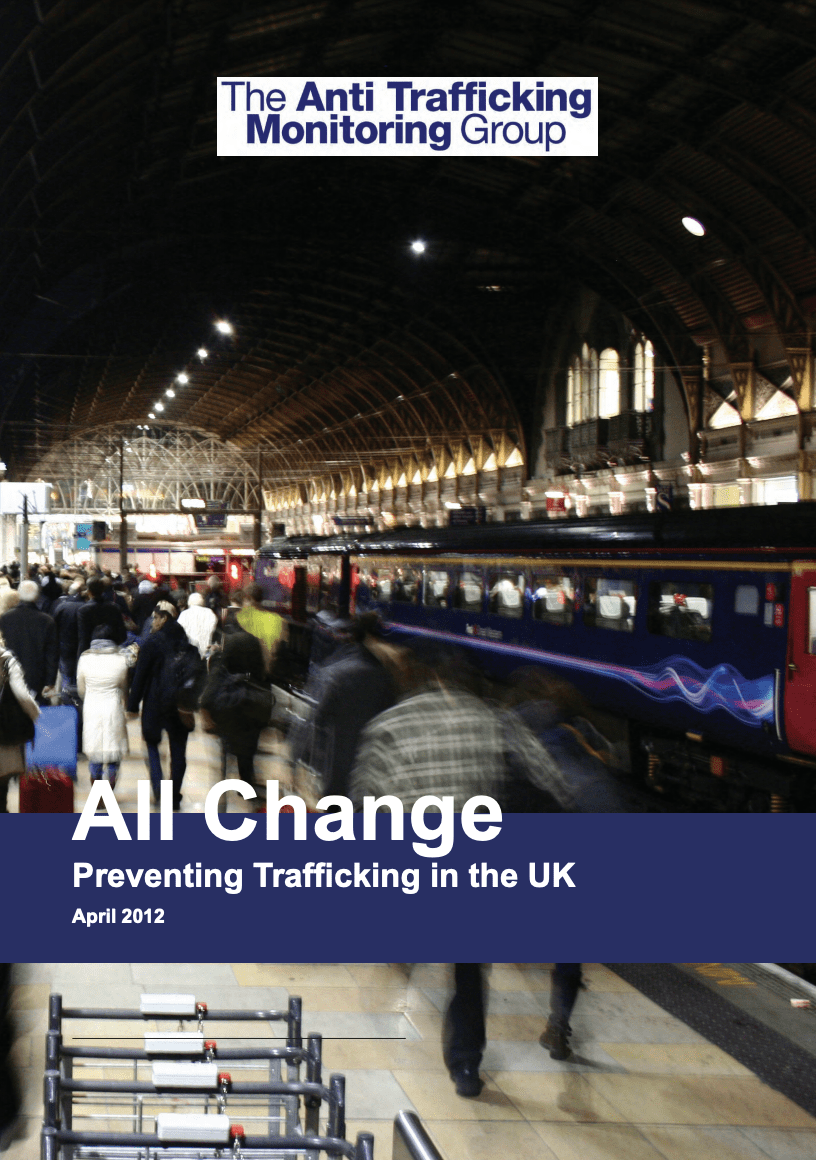
All Change: Preventing Trafficking in the UK
Introduction
The Anti-Trafficking Monitoring Group’s (ATMG) research found that some preventative activities have been implemented across the UK and identified some areas of good practice, in particular at regional and local levels. Good examples were, however, somewhat obscured by the overall lack of a comprehensive prevention strategy. Consequently, prevention seems to be the weakest of the “three P’s” – prevention – protection – prosecution – used to frame anti-trafficking work. There appears to be three main reasons for this: a limited understanding of the concept of prevention in the context of trafficking in human beings, the absence of a coherent prevention strategy, and the fragmented coordination of anti-trafficking efforts overall.
Background
In 2010, the ATMG published the report: Wrong Kind of Victim? One year on: an analysis of UK measures to protect trafficked persons. The report was the first comprehensive examination of the UK’s compliance with its obligations under the Council of Europe Convention on Action against Trafficking in Human Beings2 (hereafter ‘the Convention’), which came into force in the UK in 2009. The ATMG has set out to publish subsequent thematic reports assessing selected aspects of antitrafficking efforts covered by the Convention.
The 2010 report identified that in the UK “there has been little to no meaningful engagement in the area of prevention”. Trafficking prevention is known internationally to be one of the three pillars of antitrafficking work – the “three P’s”, as described above. As such, it should be considered of equal importance to the latter two “P’s”. To this end, the Convention makes trafficking prevention one of its core purposes, setting it as an essential component of any effective anti-trafficking strategy. The importance of prevention, in addition to other actions like victim protection or the prosecution of traffickers, has also been recognised in the new EU Directive on trafficking.
Prevention measures target the problem of trafficking at source and therefore complement other efforts such as victim assistance or criminal justice initiatives. Where prevention is not an integral part of antitrafficking strategies, the ATMG argues that the Government’s response focuses on the short-term consequences of trafficking, rather than addressing the underlying causes and reducing the number of victims. An approach that sees prevention as an add-on, or treats it as an afterthought, is therefore more costly in the long term, both in terms of demand on public finances and in human misery. The ATMG recognises the significance of prevention to combating trafficking. Consequently, this report focuses on ascertaining to what extent the UK Government is fulfilling its obligations under the Convention in respect of prevention.
Methodology and scope
The report is a result of an analysis of preventative measures put in place between April 2009 and June 2011. The report was compiled using information from public sources and from 80 interviews with professionals engaged in anti-trafficking work. Service providers who contributed to the research and those who are members of the ATMG, have provided a direct channel through which the views of trafficked persons are represented. The first draft of the report was shared with key professionals involved in anti-trafficking policy and practice, including Home Office officials, for comment. These comments were considered in finalising the report.
Read more here.
